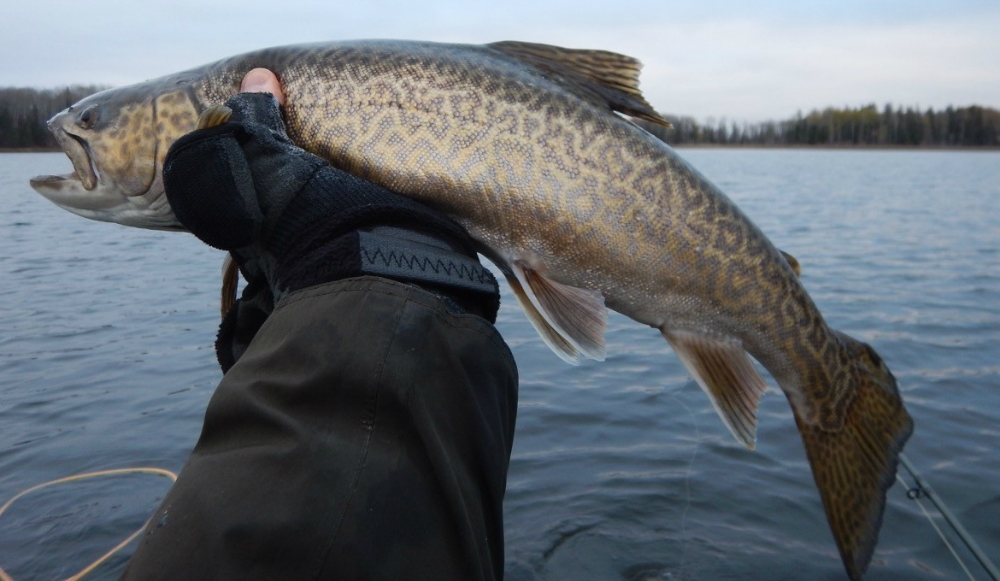The air temperature and the water temperature matched each other at 39 degrees. I was in a float tube encased in fleece, Gore-tex, and neoprene. The small minnow imitation landed near some reeds and it was promptly smashed. My rod doubled over as an orange flash bolted parallel to the reed edge. It ran like a bonefish for a solid sixty feet. Then it made a hard left directly into the reeds, wrapped my line around several stalks, and escaped. It was a tiger trout and action like that was pretty typical over the course of a couple trips this past October.

I have always known that fall is an awesome time for stillwater trout, but I never went out when it got colder than 50 degrees. I stayed indoors where it was warm and kept telling myself that the fish wouldn’t be very active in such cold temperatures. However, I kept on hearing reports of amazing fishing in temperatures far below my self-imposed threshold. There are only so many pictures of huge trout you can look at before you have to go check it out for yourself.

As a result, over the last several years, I have been making regular late fall pilgrimages to trout lakes in Manitoba’s Parkland region. Tiger trout may be my favorite targets because they are incredibly aggressive and seem to get even more aggressive as the temperature drops. When the above action took place, there was actually ice scattered around the lake’s edges.

Most of the fish seemed to be roaming weedy flats that were only a few feet deep. No need for finesse! Tiger trout are a cross between a brook and a brown trout. I am not sure if their name comes their exotic markings or their predatory nature. In late fall, they eagerly chase streamers and even top water patterns.

I had great success with Ice Minnows, which were invented by a North Dakota fly fisherman named Bob Morenski. They have a marabou tail for action and a crystal chenille back that represents the spines of a stickleback minnow. Foam Gurglers and Sliders also produced.

An intermediate line worked best if the submerged weeds were only a couple feet down. Even the Gurglers and Sliders paired up well with the intermediate line; they would swim just below the surface and the takes would be extremely visual. Another outfit with a Type II line was fastened to my tube with a couple of Velcro strips. When the weeds got a little deeper, it came in handy.

The productive flats were the size of football fields. I tended to concentrate my efforts around their deeper edges and also where scattered reeds were mixed in the submerged weed growth. Another productive spot was where the shallow end of a flat met the woody debris from a beaver house.

If you are going to try this type of fishing, use 6 or 7 weights! In a couple afternoons, I landed 4 fish over twenty inches and lost several in the same size range. Did I mention that neoprene waders, a toque, and Simms foldover mitts are a must? If you are willing to experiment, I think that tigers would even take a rather large bass bug – especially if it looked like a minnow. Actually, I might test that theory myself…






